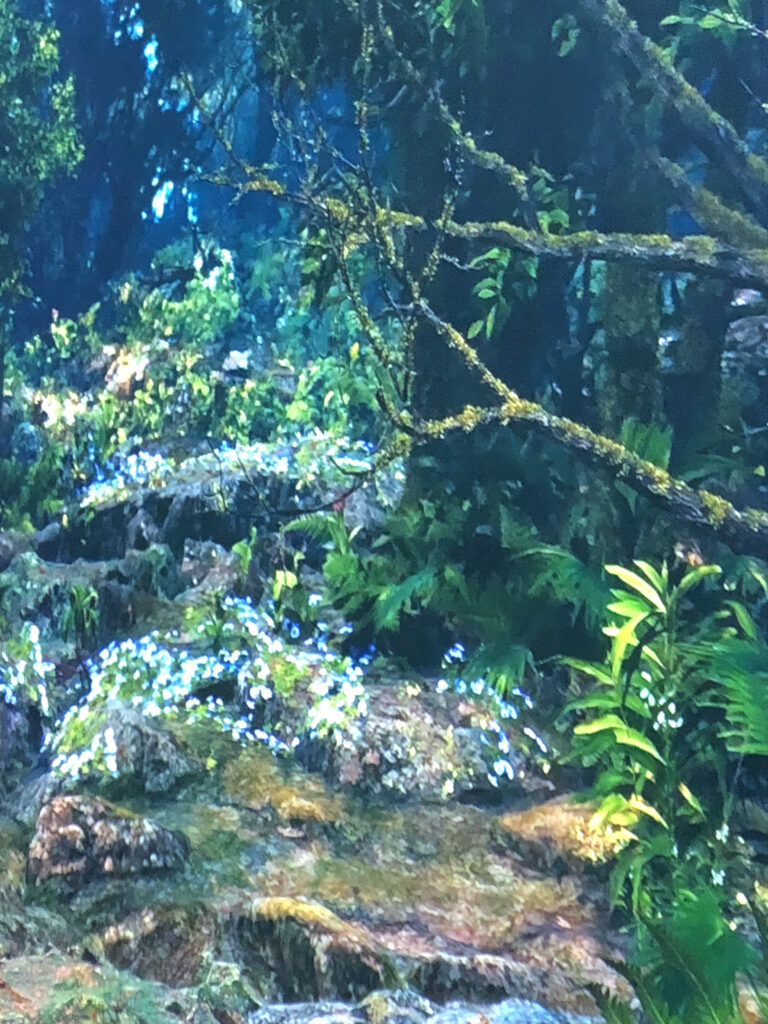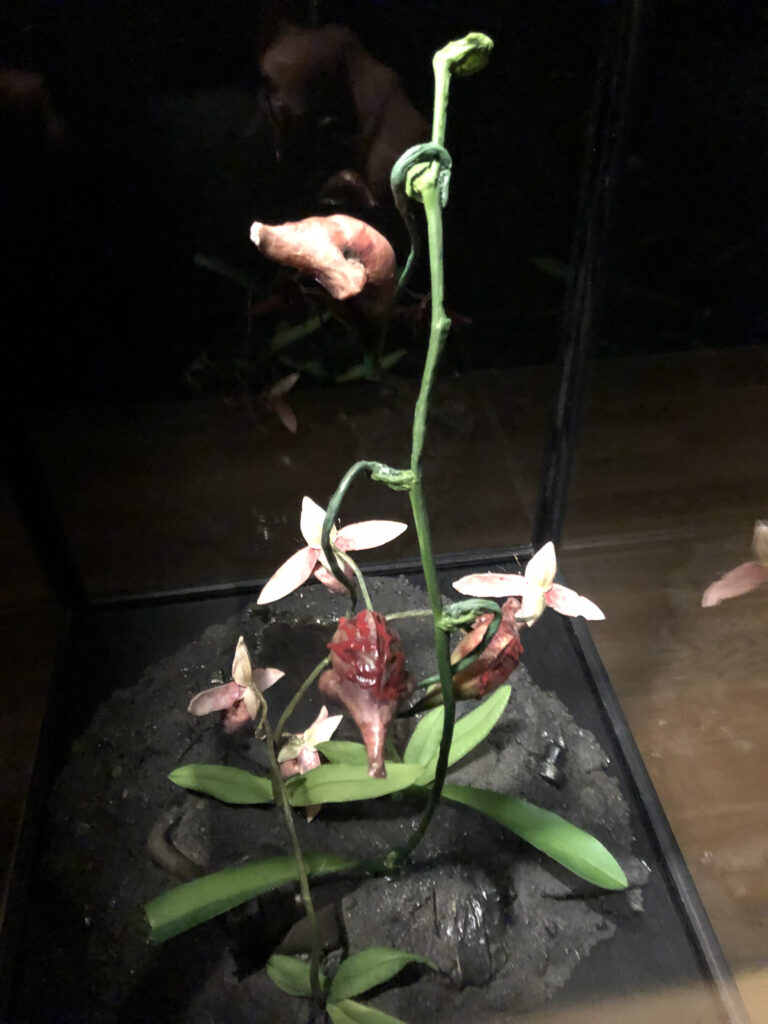In the Shirley Sherwood gallery at Kew Gardens there is a fascinating indoor exhibition by a renowned British artist, Mat Collishaw. Among the displays are the three depicted here, all quite visually stunning and amazingly inventive. This particular collection goes under the name of Petrichor, which means the refreshing smell of rain on parched ground. For sure, what is on offer here shows that Collishaw has an exceedingly fertile mind and vivid imagination. Given that this is being shown at Kew one would expect flora to play a significant part in the exhibit and that is indeed the case, as the artist endeavours to showcase the relationship between the natural world and our role in it.

Even to the End was made in collaboration with video artists from Ukraine, and the light sequence shown on the home page is part of it. It’s a cyclical performance (you pick it up at wherever in the 9-minute loop you begin watching), showing nature in all its beauty but also displaying barren and battered landscapes with burnt and devastated forests. Collishaw is describing how maintaining the balance of life and death is a never-ending requirement in which mankind perforce plays a pivotal role, both for better and for worse. The footage plays out to the music of Samuel Barber’s Adagio for Strings, which itself was inspired by a classical Roman poem about the threats to land caused by storms and fires.

Leaving that motion image behind, The Venal Muse was inspired by themes of corruption, decadence and eroticism that Collishaw found in French literature. In a series of renderings here, he points out an essential dichotomy of flowers. Of course we regard them as beautiful – we probably all have our favourites – but they are endlessly and inevitably competitive as they fight for survival. They need to attract bees, which thereby gain food from them for self-nourishment, while the plant uses the bees to disperse its pollen to other plants of the same type, thus propagating its own species.

The item above is called Albion. It is a tribute to the major oak tree in Sherwood Forest which supposedly was connected to Robin Hood. Certainly the tree is over 800 years old. But its magnificence is only bark-deep. It is actually hollowed out and rotten, which somehow makes Collishaw’s impression of it all the more fitting. The image was created using a laser scanner and the result could perhaps appropriately be said to portray a tree between life and death; decayed, yes, but also rather defiant.
Petrichor is on until April 7. If you get the chance, you should go.
